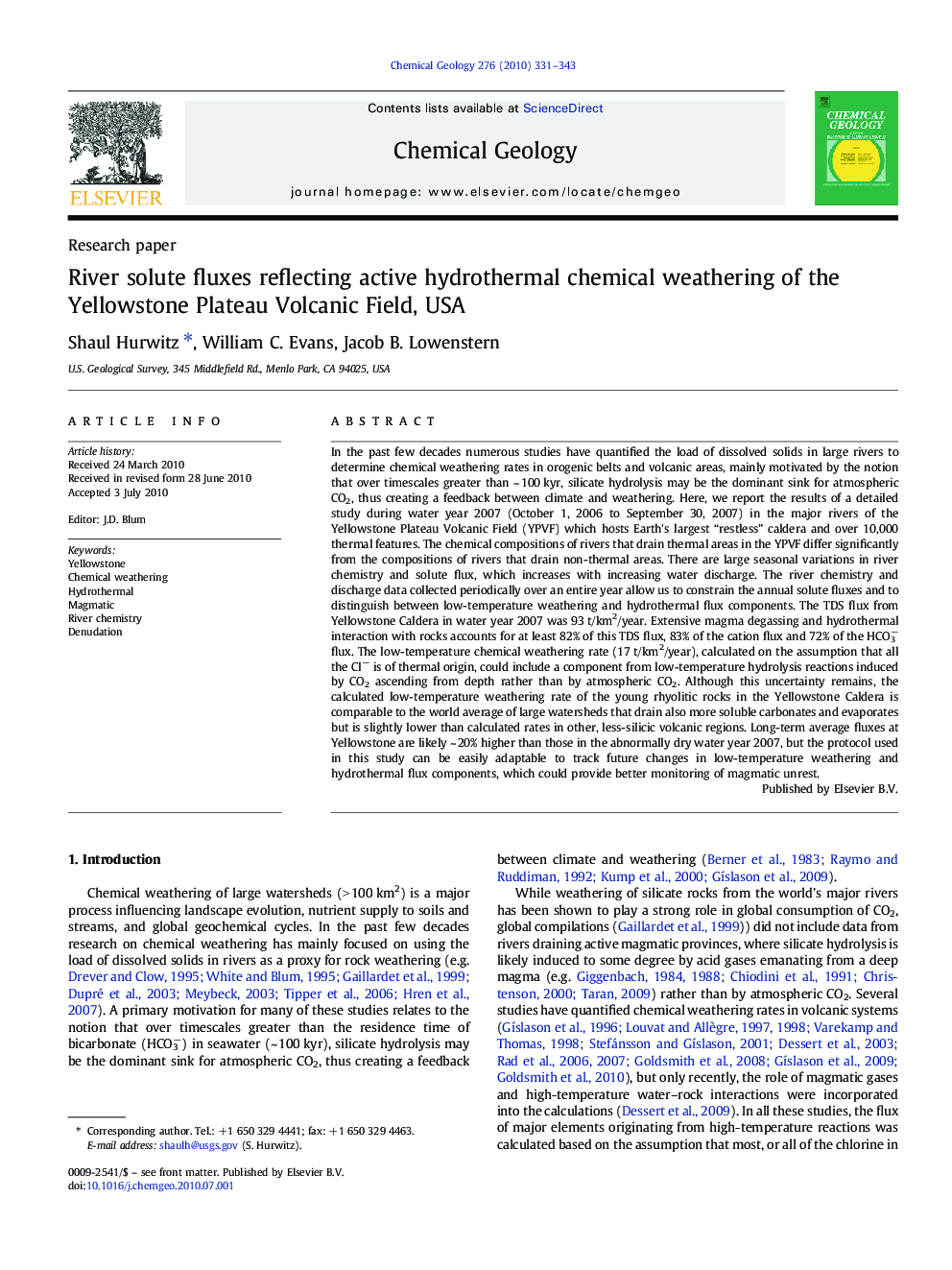| کد مقاله | کد نشریه | سال انتشار | مقاله انگلیسی | نسخه تمام متن |
|---|---|---|---|---|
| 4700027 | 1637683 | 2010 | 13 صفحه PDF | دانلود رایگان |

In the past few decades numerous studies have quantified the load of dissolved solids in large rivers to determine chemical weathering rates in orogenic belts and volcanic areas, mainly motivated by the notion that over timescales greater than ~ 100 kyr, silicate hydrolysis may be the dominant sink for atmospheric CO2, thus creating a feedback between climate and weathering. Here, we report the results of a detailed study during water year 2007 (October 1, 2006 to September 30, 2007) in the major rivers of the Yellowstone Plateau Volcanic Field (YPVF) which hosts Earth's largest “restless” caldera and over 10,000 thermal features. The chemical compositions of rivers that drain thermal areas in the YPVF differ significantly from the compositions of rivers that drain non-thermal areas. There are large seasonal variations in river chemistry and solute flux, which increases with increasing water discharge. The river chemistry and discharge data collected periodically over an entire year allow us to constrain the annual solute fluxes and to distinguish between low-temperature weathering and hydrothermal flux components. The TDS flux from Yellowstone Caldera in water year 2007 was 93 t/km2/year. Extensive magma degassing and hydrothermal interaction with rocks accounts for at least 82% of this TDS flux, 83% of the cation flux and 72% of the HCO3− flux. The low-temperature chemical weathering rate (17 t/km2/year), calculated on the assumption that all the Cl− is of thermal origin, could include a component from low-temperature hydrolysis reactions induced by CO2 ascending from depth rather than by atmospheric CO2. Although this uncertainty remains, the calculated low-temperature weathering rate of the young rhyolitic rocks in the Yellowstone Caldera is comparable to the world average of large watersheds that drain also more soluble carbonates and evaporates but is slightly lower than calculated rates in other, less-silicic volcanic regions. Long-term average fluxes at Yellowstone are likely ~ 20% higher than those in the abnormally dry water year 2007, but the protocol used in this study can be easily adaptable to track future changes in low-temperature weathering and hydrothermal flux components, which could provide better monitoring of magmatic unrest.
Research Highlights
► Magma degassing and hydrothermal-rock interaction accounts for most of the solute flux.
► Low-temperature weathering rates are within range of the world's large watersheds.
► There are large seasonal and inter-annual variations in chemical weathering rates.
► Chemical variations between rivers that drain thermal and non-thermal areas are large.
Journal: Chemical Geology - Volume 276, Issues 3–4, September 2010, Pages 331–343